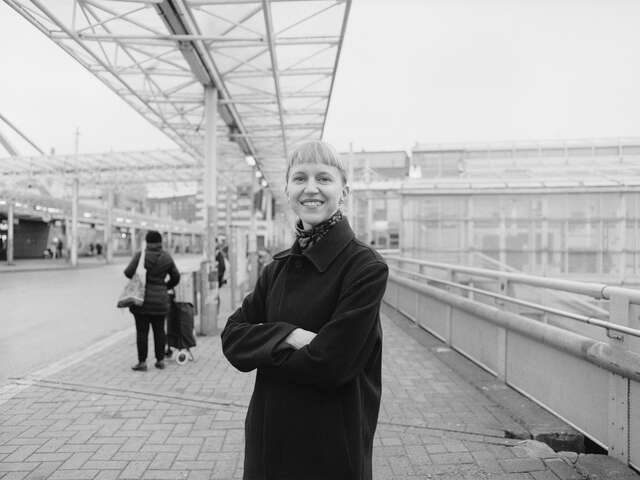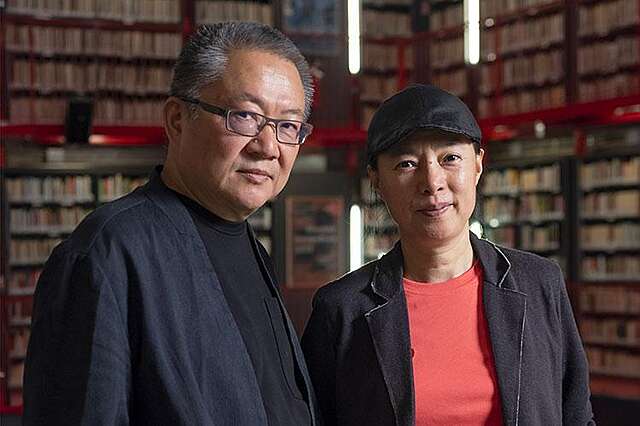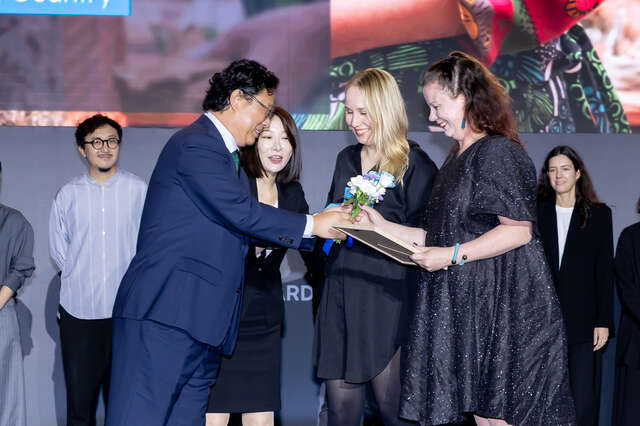Recycling all the way – The Huussi exhibition not only talks about recycling but also recycles
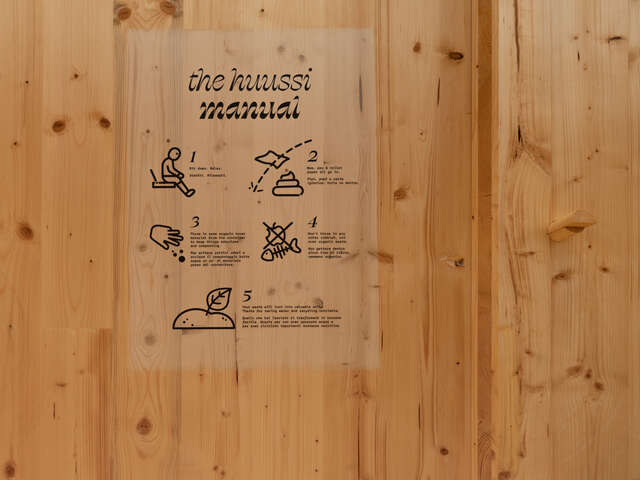
Ugo Carmeni
Finland's exhibition at the 2023 Biennale Architettura in Venice addresses questions of sustainability and the circular economy. Henna Salminen, a Finnish architecture student working as an invigilator and guide at the Pavilion of Finland, writes about the different aspects of recycling in the Huussi exhibition.
The exhibition Huussi – Imagining the future history of sanitation looks at the current flushing toilet from the future and sees it as an invention left behind in history. Instead, it proposes the dry toilet and other alternative sanitation technologies as solutions to water scarcity and the circulation of nutrients.
The recycling aspect has also been taken into account in the exhibition production: in the construction of the dry toilet installation – the huussi – and its use after the exhibition. The materials used in the structure are recycled, and nothing is brought back to Finland or thrown away after the exhibition. Hence, recycling extends holistically from the theme of the exhibition to the exhibition production.
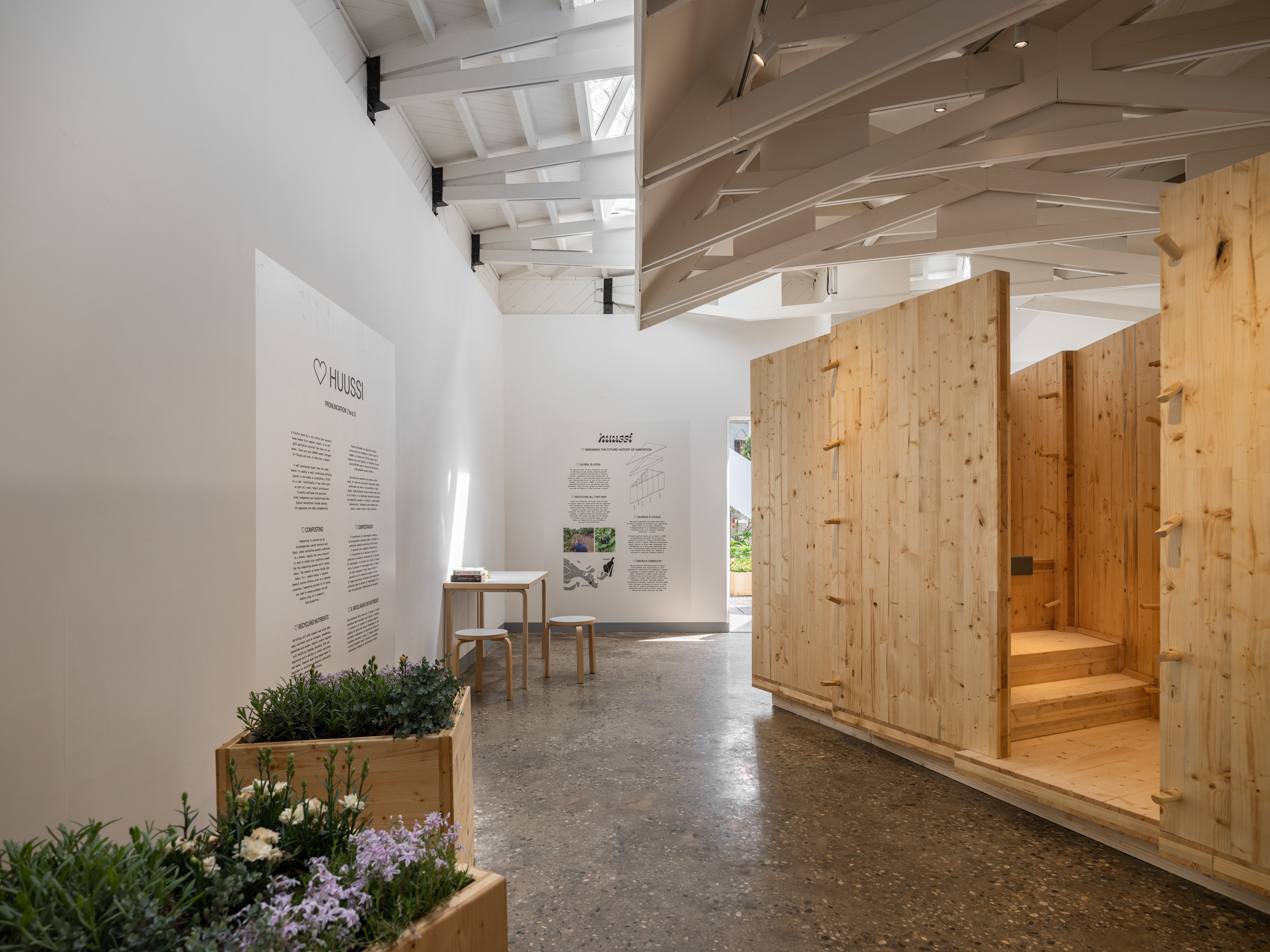
The huussi, a composting dry toilet, is a good example of how recycling and sustainable solutions don't have to be complicated. After all, it is not a new invention, as it has been used for hundreds of years. The composting toilet works on the same principle as what happens to animal faeces and urine in nature. Toilet waste – which actually isn’t waste but an important resource in terms of nutrients – contains, among other things, phosphorus and nitrogen, which plants need. The huussi collects and composts the toilet waste while retaining the nutrients it contains, resulting in a nutrient-rich compost suitable for fertilising plants.
Using compost to fertilise plants returns nutrients and carbon to the soil, giving plants the elements they need to grow. Toilet compost can be used for flowering plants and, after careful composting, also for fertilising food crops. Chemical fertilisers commonly used to fertilise plants do not contain carbon; consequently, their use will eventually impoverish the soil. So a composting dry toilet not only saves water but also offers a solution for recycling nutrients and keeping the soil nutrient-rich.
Exhibition built of recycled materials
Since the recycling of nutrients is one of the Huussi exhibition’s main themes, also the exhibition production should, naturally, utilise recycling as much as possible. As a result, sustainable choices are reflected in the materials and design of the exhibition elements.
The protagonist of the exhibition, a real huussi built in the centre of the Alvar Aalto-designed Finnish pavilion, as well as the planting boxes inside and on the patio, are assembled from scrap wood from the CLT products industry. Cross-laminated timber, CLT, is a solid wood material used, for example, in load-bearing wall structures. The CLT components used in the huussi installation are made from window holes cut from façade structures at the Stora Enso factory in Austria, where they were prefabricated as ready-to-install elements and transported to Venice.
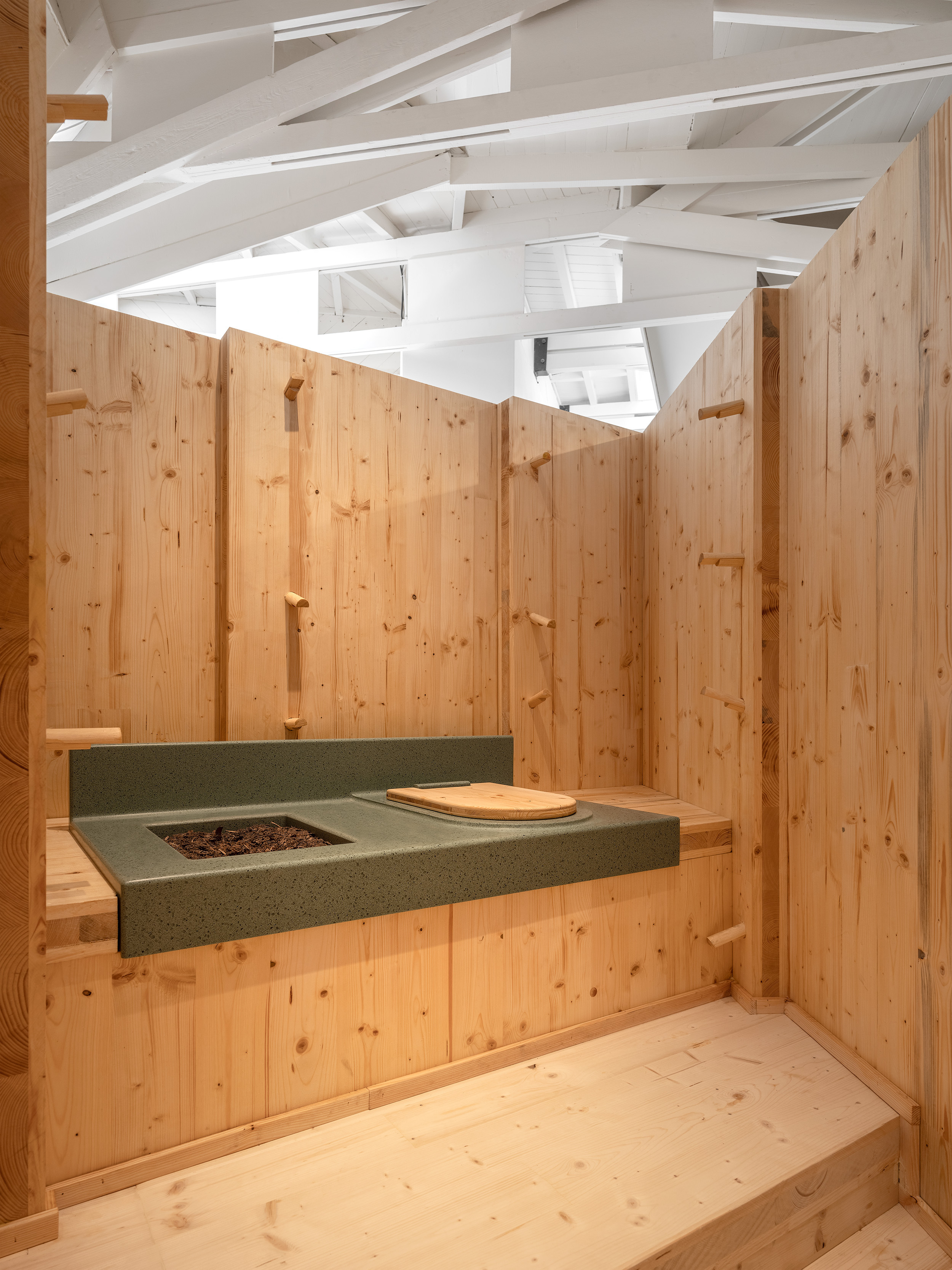
The installation consists of modular wall elements, which are fastened with wooden wedges. The wedges can be unfastened, allowing the structure to be dismantled, transported, and reassembled, as one of the key objectives of Finland’s exhibition was to find a way to work with locals and extend the exhibition concept beyond the exhibition area and duration. In other words, to get the huussi installation into actual use after the exhibition.
As a result, at the end of the Biennale Architettura in November, the huussi will be moved to the island of Vignole, situated near the main island of Venice, for the benefit of Veras, a local non-profit association. Vignole is a former wasteland that the association is reclaiming for farming. Veras has four hectares of land on the island where the community will be able to utilise the composted soil produced by the dry toilet. The planting boxes will also be given to Veras after the exhibition.
However, in order to allow Biennale visitors to fully explore the huussi and its technology – the Biolan composting bin – the dry toilet is not in use during the exhibition period and does not have a door or a roof while in the pavilion. When it is moved to the Vignole Island, the roof and door will be fabricated of the CLT panels serving as backplanes for the video works in the exhibition.
In addition to the CLT scrap pieces, other recycled materials have also been used in the installation, such as Durat, an innovative Finnish material made of recycled plastic composite and of which the huussi’s sanitary fittings are made. The polyester-based material itself is 100% recyclable and can be used to make a variety of sinks by casting, and the Durat board used for worktops can be worked similarly as wood. The toilet seat and container for the cover material, which is essential in the use of the composting toilet, were designed and custom-made for the huussi of the same green-tinted Durat material as the installation’s hand-wash basin.
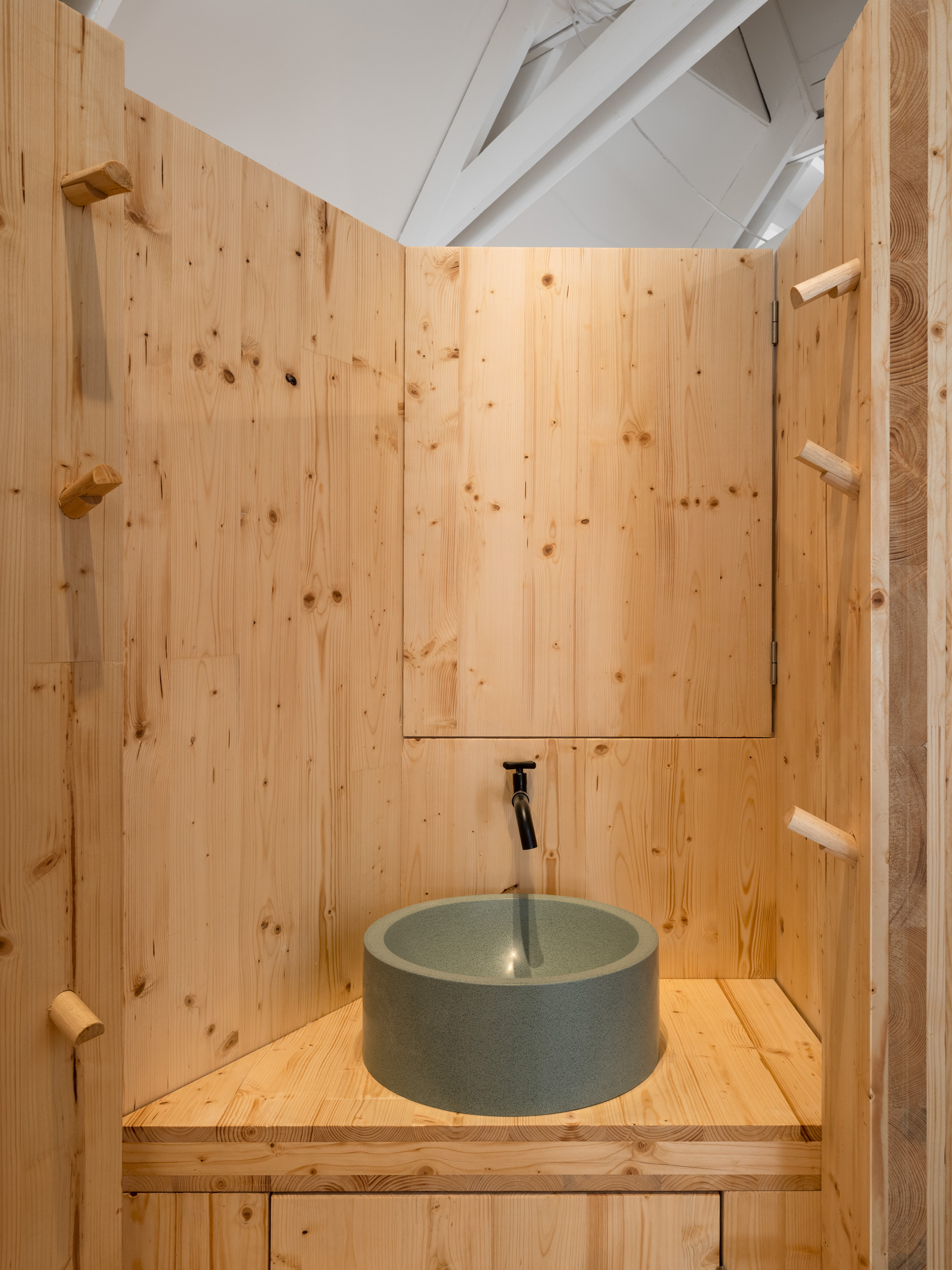
Permanent and sustainable
Exhibition and event production is often temporary and disposable, and the Biennale is only open for six months. To ensure that the principles of sustainability are applied throughout the exhibition production, the fate of the furniture used in the exhibition space must also be taken into account.
The furniture used in the Pavilion of Finland – stools and tables from Artek – will also remain in Venice. Some of them are new, received for the Huussi exhibition, while others have already been used in previous architecture and art biennale exhibitions held in the pavilion. The furniture designed by Alvar Aalto seems to be at home in the Aalto Pavilion.
Sustainable exhibition productions are promoted in a wider context, too. Archinfo, which is in charge of the Pavilion of Finland, takes part in the Green Lion initiative launched by the Global Commissioners’ Network. The initiative aims to motivate and commit Biennale exhibition organisers to find more sustainable and eco-friendly ways to produce exhibitions.
Although the initiative’s name refers to La Biennale di Venezia’s prestigious award, the Golden Lion, sustainability and social responsibility are not something to compete in. They require cooperation between national pavilions, the Biennale organisation and local actors. The key objective of the initiative is to promote responsibility and encourage exhibition organisers to support each other in finding sustainable solutions.
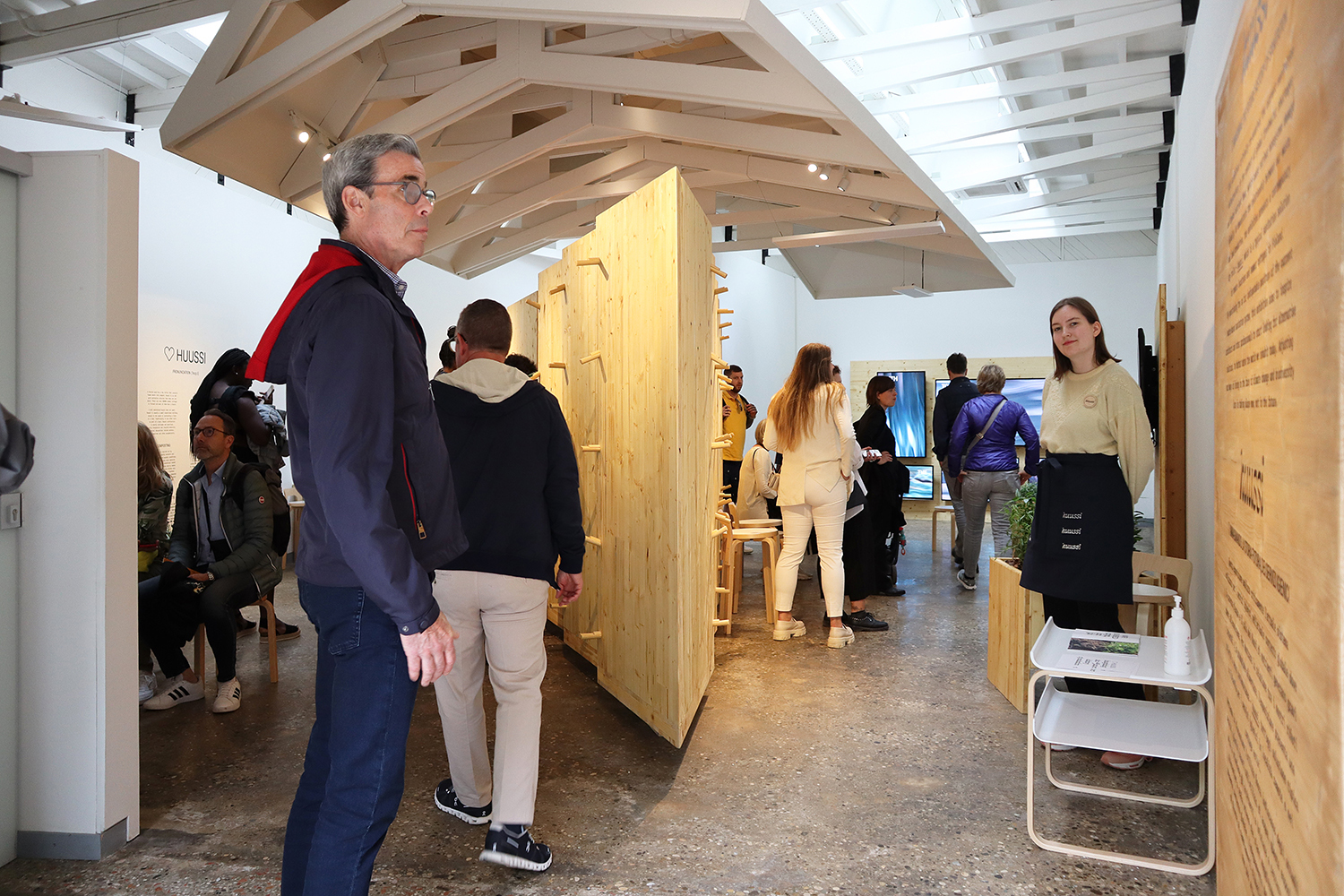
Henna Salminen studies architecture at Aalto University, where she has also received a Master’s Degree in Arts. She works as an intern and invigilator at the Pavilion of Finland from May to July 2023.
